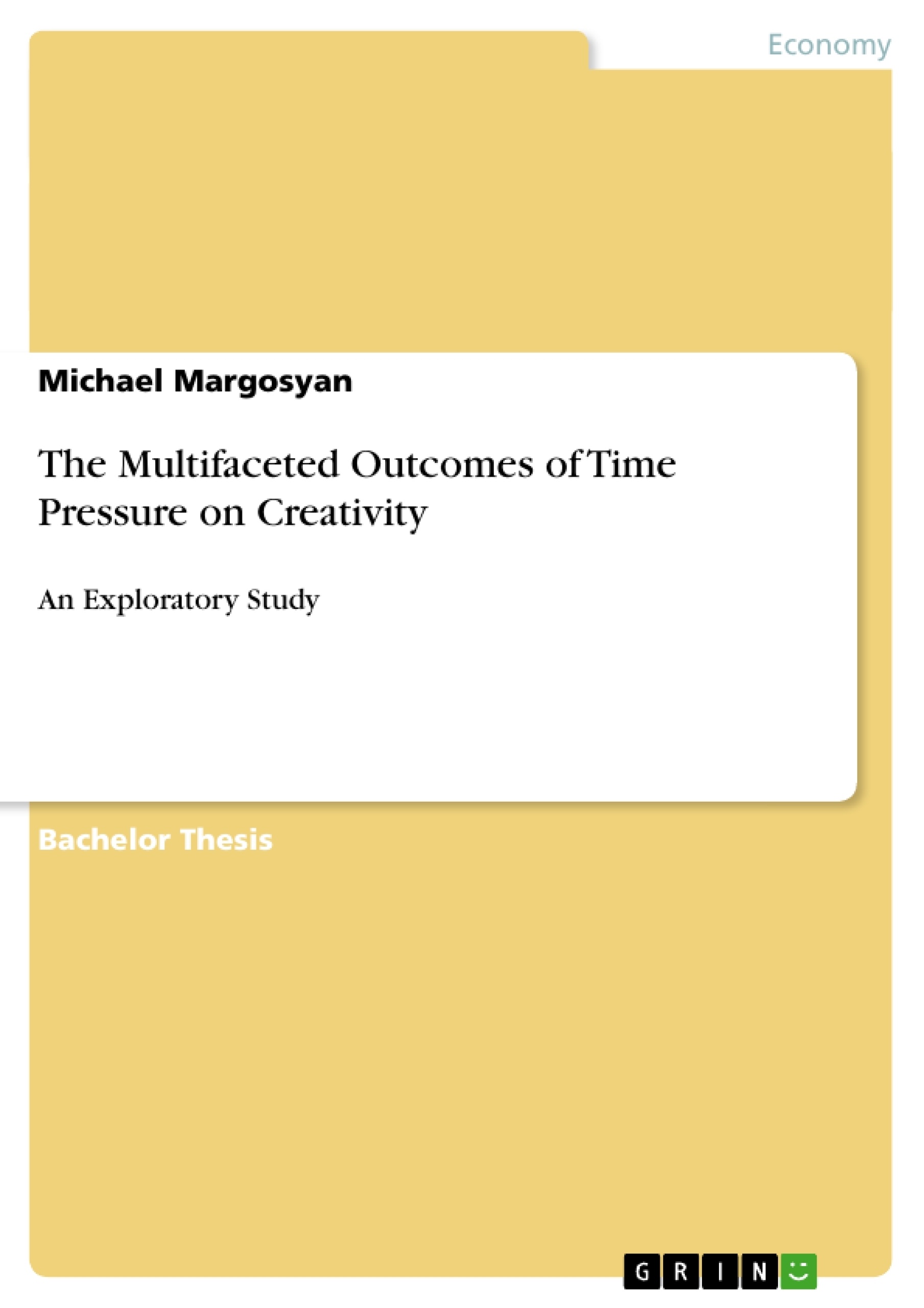This research paper sets out the dissension between the corporate world and the scientific world concerning the versatile impingements of time pressure on creativity. On the one hand, the corporate world is widely assuming that time pressure is beneficial to creativity. On the other hand, literature reveals that creativity is disheartened by time pressure. Based upon an examination of existing literature and an exploratory study within international organizations, an interesting outcome arose. The viewpoints from both parties, the corporate world and the research world, need to be nuanced. It is interval pressure that encourages organizational creativity the most.
Inhaltsverzeichnis (Table of Contents)
- INTRODUCTION
- Purpose of the study
- THEORETICAL FRAMEWORK
- Theoretical background of organizational creativity
- Measuring creativity and innovation
- Time pressure and creativity
- RESEARCH DESIGN
- Research Methods
- Limitations
- DISCUSSION AND ANALYSIS
- Interview with Accenture
- Interview with Dinana Fashion BV
- Interview with Ernst & Young
- Interview with Falco BV
- Interview with Vodafone
- CONCLUSIONS AND RECOMMENDATIONS
Zielsetzung und Themenschwerpunkte (Objectives and Key Themes)
This research paper investigates the relationship between time pressure and organizational creativity. It aims to shed light on the discrepancies between the corporate world's assumption that time pressure fosters creativity and the scientific world's view that it hinders it. The paper explores these perspectives through an examination of existing literature and interviews with professionals in international organizations. Key themes explored in the paper include:- The impact of time pressure on organizational creativity and innovation
- The role of time pressure in value creation
- The difference between creativity in arts and creativity in a business context
- The potential for nuanced perspectives on the relationship between time pressure and creativity
- The importance of considering corporate sustainability in relation to creativity and innovation
Zusammenfassung der Kapitel (Chapter Summaries)
The introduction chapter sets the context for the study, emphasizing the significance of creativity and innovation for corporate sustainability and competitive advantage. It discusses the differing perspectives on time pressure's effect on creativity and the study's purpose to bridge this gap. The theoretical framework chapter reviews existing research on organizational creativity and innovation, focusing on the definitions and measurements of these concepts. It examines the literature concerning the impact of time pressure on creativity, highlighting various arguments and viewpoints. The research design chapter outlines the methodology employed in the study. It details the research methods used, including interviews with professionals in international organizations, and acknowledges the limitations of the study. The discussion and analysis chapter presents the findings from the interviews conducted with employees at Accenture, Dinana Fashion BV, Ernst & Young, Falco BV, and Vodafone. Each interview is analyzed individually, providing insights into the perceived time pressure, its influence on performance, and the relationship between time pressure and creativity within each organization.Schlüsselwörter (Keywords)
The primary focus of this study is on the interplay between time pressure and organizational creativity. It explores the impact of time pressure on innovation, value creation, and corporate sustainability. Key terms include creativity, innovation, time pressure, organizational creativity, and corporate sustainability.- Quote paper
- Michael Margosyan (Author), 2009, The Multifaceted Outcomes of Time Pressure on Creativity, Munich, GRIN Verlag, https://www.grin.com/document/133917



